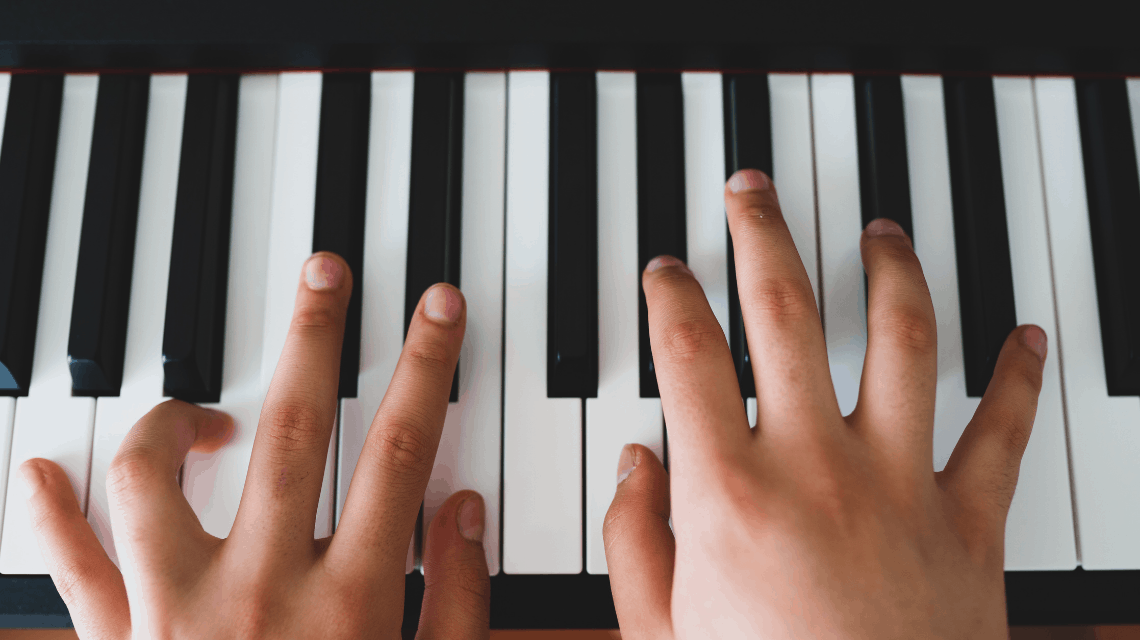Strategies For Memorizing Piano Music
Has this ever happened to you: You have a favorite piece of music that you’ve played so many times that your hands just go into autopilot and you can play the notes effortlessly. You probably didn’t try to memorize this song, but you just enjoy playing it so much that memorization happened organical

Has this ever happened to you:
You have a favorite piece of music that you’ve played so many times that your hands just go into autopilot and you can play the notes effortlessly. You probably didn’t try to memorize this song, but you just enjoy playing it so much that memorization happened organically.
But, then…
Maybe you tried playing this piece of music for a teacher or family member. Or, maybe you played it at a different piano than your own.
Somehow the piece that you’ve played for memory so many times fell apart. The keys didn’t feel right under your hands. Your mind would blank out at certain times. You struggle to find notes that you’ve played correctly so many times.
Most pianists are pretty familiar with this scenario.
A lot of pianists fall into one of 2 categories:
- I can’t memorize music/I’m not good at memorizing music/I don’t know how to memorize music
- I memorize my music without trying
If you fall in this first category, know that memorizing doesn’t come easily to a lot of people, but you can definitely learn strategies to help you learn to memorize music.
If you’re in the second category, you might not realize that there’s a problem until you find yourself in the situation above where you blank out on what to play. In this case, learning a few memorizing strategies will give you the tools that you need to keep going, even when it feels like you’ve forgotten everything you know.
Let’s look at some different ways to approach memorizing music. There’s a good chance that one or two of these techniques are your go-to memorizing trick, but try combining all of these suggestions to develop a well-rounded and reliable memory.
Muscle Memory
Muscle memory is an important part of playing the piano. We train our hands to learn distances between keys, shapes of chords and sequences in the music. Oftentimes our hands can feel the geography of the piano and this kinesthetic awareness on the keys is crucial to playing the piano.
However, a lot of pianists run into trouble when they rely too much on muscle memory without utilizing any other memorization strategies.
The scenario described above where the pianist blanks out and can’t play what once seemed so familiar is often exactly what happens when muscle memory takes over. The slightest distraction or slip of the fingers can make you completely lose everything.
If you don’t relate to having this reliance on muscle memory, do make a point to start tuning in to what your hands feel like on the keys. Try to increase your awareness of the space that your hands create on the keys, how your hand fits over the black keys and what it feels like to move your fingers.
On the other hand, if you feel like you rely too much on muscle memory to learn your music, keep reading to find more strategies to start implementing in your music.
Visualize Your Music
Having a photographic memory means that you can easily recall specific details of what you have seen. Some pianists report having a photographic memory of what they have seen on their sheet music.
While not everyone can tap into this gift to its fullest, you can still work to recall at least some of the details of your sheet music.
For example, when you aren’t looking at your sheet music, can you still track where you would be on the page in your mind?
Or, can you visualize certain chords, passages or rhythms as you are playing them?
Can you see the starting notes of your sheet music, even when you’re not looking at it?
If this seems difficult to you, try to practice this skill when you are working on your music. Take a close look at details you see on the page and see if you can commit them to memory when you look away from your page.
Know Your Facts
A highly effective way to memorize piano music is to go beyond just reading the notes and to have a solid understanding of the music theory behind the notes. This is often a highly under-utilized memorization strategy. Pianists will often try to resort to muscle memory and visual cues before stopping to think cognitively about the details of their music.
As you are learning your music, do you have an awareness of what key you are playing in, or does it feel like there are a bunch of random sharps and flats?
Can you name the chord progressions in your music as you play them, or does it seem like a random collection of chords?
Are you aware that the notes in each hand together form a specific chord?
Are there any scale-like passages, arpeggios, or other familiar sequences?
Learning your music with an awareness of music theory facts and concepts will give you the security you need to keep your music going when it feels like you’ve forgotten it.
Maybe you can’t recall exactly how your piece goes, but you do know what chord progression it follows. Keeping the correct chords sounding even if you’re missing other elements of the music can help you recover and move on from mistakes and memory lapses.
Train Your Ear
Some pianists can play by ear. They can hear music and quickly get a good sense of what is happening in the music. But, not everyone has this innate gift and others have to work harder to hear specific details in the music.
Whether this comes easily to you or not, there are still a lot of skills that you can hone as a musician to help you hear your music in your mind to help you learn it quicker.
For example, try paying close attention to the contour of the musical line you are playing.
Which direction are the notes moving?
Can you hear specific intervals as you move from note to note?
Take the time to listen to your music, get the music in your ear and observe details that you hear as you listen.
Visual Patterns On The Keys

When people think of learning music visually, they are usually referencing what it looks like on the page.
Sometimes pianists will be so fixed on the page in the learning stages of their music that they are mostly unaware of what their hands look like on the piano keys.
Then, once music becomes memorized, they start looking at their hands and notice all kinds of patterns and visual cues that were previously unobserved.
It can be pretty distracting to be playing for memory, then to suddenly notice what your hands are actually doing.
Furthermore, sometimes making observations about how your hands look on the keys is a really helpful part of the learning process.
Don’t wait to make these observations until after your music is already memorized. Instead, learn your music in a way that allows you to take the time to watch for patterns and positions in relation to your hands on the keys.
If you feel stuck as you are learning to memorize your music, try out some of these strategies! There is no one right way to approach memorizing music and you will likely learn to develop your own system that is the most effective for you. But, definitely use a combination of different strategies so that you have a variety of skills to fall back on in case of a memory lapse.

